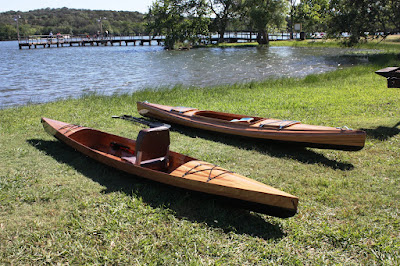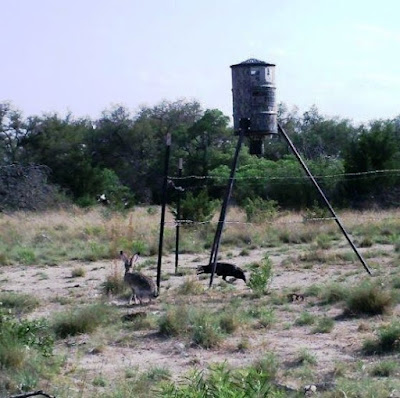 It’s not a bright idea to visit Udzungwa Mountains National Park as a weekend trip from Dar es Salaam, as it’s a six to eight hour drive depending on traffic and road conditions, but I was eager to bird the region before I left Tanzania. The Udzungwa Range is the second most biodiverse place on the continent, with a remarkably high level of endemism, including over 25% of its plant species. Although the park wasn’t established until 1992, there are still two thousand square kilometers of continuous closed-canopy forest intact, stretching from an elevation of two hundred to over two thousand meters. It’s truly the jewel of the Eastern Arc mountains with many biological discoveries no doubt yet to be made, but it’s also a difficult site to meaningfully explore as access is limited, arduous, and expensive to arrange. With over four hundred recorded bird species, including several that were discovered only recently, such as the unique Udzungwa Partridge and Rufous-Winged Sunbird, the park bears must-see status for birders, even though tracking down these elusive endemics is hardly guaranteed.
It’s not a bright idea to visit Udzungwa Mountains National Park as a weekend trip from Dar es Salaam, as it’s a six to eight hour drive depending on traffic and road conditions, but I was eager to bird the region before I left Tanzania. The Udzungwa Range is the second most biodiverse place on the continent, with a remarkably high level of endemism, including over 25% of its plant species. Although the park wasn’t established until 1992, there are still two thousand square kilometers of continuous closed-canopy forest intact, stretching from an elevation of two hundred to over two thousand meters. It’s truly the jewel of the Eastern Arc mountains with many biological discoveries no doubt yet to be made, but it’s also a difficult site to meaningfully explore as access is limited, arduous, and expensive to arrange. With over four hundred recorded bird species, including several that were discovered only recently, such as the unique Udzungwa Partridge and Rufous-Winged Sunbird, the park bears must-see status for birders, even though tracking down these elusive endemics is hardly guaranteed. Philip Briggs covers the site in his typically excellent way in the Bradt Guide to Tanzania, honestly recommending a visit to the Eastern Usambaras over the Udzungwas due to the superior infrastructure found at Amani Nature Reserve, so my expectations were low from the start. As I awoke early on Saturday morning and stumbled around the grounds of the Udzungwa Forest Camp though, I was in awe of the forested mountains stacked up steeply just behind the boundary of the camp. I could hardly contain my excitement all day as I first visited the Kilombero Floodplains to the southwest of the range in search of another three endemic bird species, the Kilombero Weaver and Cisticola, as well as the White-Tailed Cisticola. On the return trip to camp, I insisted on a quick visit to the park headquarters before dark ($20 per person per 24 hours), despite having to pay the additional ridiculous fee ($10) to have a guide accompany me on a two-hundred meter walk into the forest interior (I had to pay the same fee the following morning). Even on this modest walk, I managed to spot the Uluguru Violet-Backed Sunbird, Yellowbill, and Retz’s Helmet-Shrike.
Philip Briggs covers the site in his typically excellent way in the Bradt Guide to Tanzania, honestly recommending a visit to the Eastern Usambaras over the Udzungwas due to the superior infrastructure found at Amani Nature Reserve, so my expectations were low from the start. As I awoke early on Saturday morning and stumbled around the grounds of the Udzungwa Forest Camp though, I was in awe of the forested mountains stacked up steeply just behind the boundary of the camp. I could hardly contain my excitement all day as I first visited the Kilombero Floodplains to the southwest of the range in search of another three endemic bird species, the Kilombero Weaver and Cisticola, as well as the White-Tailed Cisticola. On the return trip to camp, I insisted on a quick visit to the park headquarters before dark ($20 per person per 24 hours), despite having to pay the additional ridiculous fee ($10) to have a guide accompany me on a two-hundred meter walk into the forest interior (I had to pay the same fee the following morning). Even on this modest walk, I managed to spot the Uluguru Violet-Backed Sunbird, Yellowbill, and Retz’s Helmet-Shrike. I walked the same short trails the following morning with the same park guide, Huruma Shao (mobile 0764733674), who knows his birds pretty well and pointed out both Livingstone’s Flycatcher and Black-and-White Shrike-Flycatcher to me while I was focused on other species within mixed flocks. They were terrific finds and I was certainly grateful to have another pair of discerning eyes with me, but these two new lifers couldn’t hold a candle to the group of Livingstone’s Turaco that we encountered shortly afterwards. Since I first laid eyes on this incredible, distinctly African family of birds in the field guide, I have been obsessed with seeing as many of these large, long-tailed, and crested beauties as possible. Hartlaub’s, Fischer’s, and now Livingstone’s Turaco I’ve seen, each one seemingly more stunning than the last, although my photographs hardly do the latter bird justice. From my limited experience, I can say that turacos are often heard but rarely seen well, as they stay high in the canopy and dash squirrel-like along branches into dense cover. We were lucky to linger for ten minutes on this one as it stared us down from its perch high above.
I walked the same short trails the following morning with the same park guide, Huruma Shao (mobile 0764733674), who knows his birds pretty well and pointed out both Livingstone’s Flycatcher and Black-and-White Shrike-Flycatcher to me while I was focused on other species within mixed flocks. They were terrific finds and I was certainly grateful to have another pair of discerning eyes with me, but these two new lifers couldn’t hold a candle to the group of Livingstone’s Turaco that we encountered shortly afterwards. Since I first laid eyes on this incredible, distinctly African family of birds in the field guide, I have been obsessed with seeing as many of these large, long-tailed, and crested beauties as possible. Hartlaub’s, Fischer’s, and now Livingstone’s Turaco I’ve seen, each one seemingly more stunning than the last, although my photographs hardly do the latter bird justice. From my limited experience, I can say that turacos are often heard but rarely seen well, as they stay high in the canopy and dash squirrel-like along branches into dense cover. We were lucky to linger for ten minutes on this one as it stared us down from its perch high above. Having arrived at 10pm on Friday night after eight hours of driving, much of it through Mikumi National Park in the dark, where trucks and busses barrel blindly past elephants and giraffes, I thought it would be prudent to return to Dar in the daylight. A more meaningful visit to the Udzungwa Mountains should at least include the half-day hike to Sanje Waterfall, which starts ten kilometers back along the road from park headquarters and climbs to a stunning series of cascades. A true expedition into the Udzungwas would necessitate a multi-day journery up to the park’s montane forest near an elevation of two thousand meters, where the sunbird, various forest robins, and perhaps even the partridge can be seen. As Briggs describes in his guidebook, the best chance for spotting the three localized endemics (I haven’t mentioned the Iringa Alkalat yet) actually involves accessing the park from the remote western side, necessitating at least five days to travel there, arrange a permit, and reach the high-altitude site on foot. It’s no wonder these species weren’t discovered until recently. Perhaps with another year living in the country, I might have worked up the desperation for just such an expedition.
Having arrived at 10pm on Friday night after eight hours of driving, much of it through Mikumi National Park in the dark, where trucks and busses barrel blindly past elephants and giraffes, I thought it would be prudent to return to Dar in the daylight. A more meaningful visit to the Udzungwa Mountains should at least include the half-day hike to Sanje Waterfall, which starts ten kilometers back along the road from park headquarters and climbs to a stunning series of cascades. A true expedition into the Udzungwas would necessitate a multi-day journery up to the park’s montane forest near an elevation of two thousand meters, where the sunbird, various forest robins, and perhaps even the partridge can be seen. As Briggs describes in his guidebook, the best chance for spotting the three localized endemics (I haven’t mentioned the Iringa Alkalat yet) actually involves accessing the park from the remote western side, necessitating at least five days to travel there, arrange a permit, and reach the high-altitude site on foot. It’s no wonder these species weren’t discovered until recently. Perhaps with another year living in the country, I might have worked up the desperation for just such an expedition.Notable birds seen: Palm-Nut Vulture, Yellowbill, Trumpeter Hornbill, Livingstone’s Turaco, Green-Backed Woodpecker, Livingstone’s Flycatcher, Black-and-White Shrike Flycatcher, Grey Cuckoo-Shrike, Uluguru Violet-Backed Sunbird, Olive Sunbird, Retz’s Helmet-Shrike, Fork-Tailed Drongo, Dark-Backed Weaver.






















































